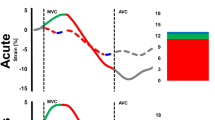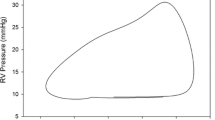Abstract
Cardiac resynchronization therapy (CRT) improves measures of systolic function and clinical status. However, its effect on diastolic function is not well established. Commonly used parameters of diastolic function are measured from echocardiography, using pulse wave and tissue Doppler technologies, as well as timing and deformation data. Review of the existing studies that address the relationship between diastolic function and CRT shows conflicting data, but general trends can be deduced. Baseline elevated filling pressure appears to identify patients most likely to derive improvement in that particular parameter. Intrinsic relaxation does not appear to be significantly impacted by CRT. Generally, changes in diastolic properties after CRT appear to be linked to changes in systolic function. Specific therapy aimed at diastolic asynchrony is lacking, partly due to an unclear relationship between diastolic asynchrony and diastolic dysfunction, and the inability to specifically impact diastolic timing with a systolic intervention such as CRT.




Similar content being viewed by others
References
Papers of particular interest, published recently, have been highlighted as: • Of importance •• Of major importance
Abraham WT, Fisher WG, Smith AL, et al. Cardiac resynchronization in chronic heart failure. N Engl J Med. 2002;346(24):1845–53.
Bristow MR, Saxon LA, Boehmer J, et al. Cardiac-resynchronization therapy with or without an implantable defibrillator in advanced chronic heart failure. N Engl J Med. 2004;350(21):2140–50.
Cleland JG, Daubert JC, Erdmann E, et al. The effect of cardiac resynchronization on morbidity and mortality in heart failure. N Engl J Med. 2005;352(15):1539–49.
Tang AS, Wells GA, Talajic M, et al. Cardiac-resynchronization therapy for mild-to-moderate heart failure. N Engl J Med. 2010;363(25):2385–95.
Yancy CW, Jessup M, Bozkurt B, et al. 2013 ACCF/AHA guideline for the management of heart failure: a report of the American college of cardiology foundation/American heart association task force on practice guidelines. Circulation. 2013;128(16):1810–52.
Chan PS, Khumri T, Chung ES, et al. Echocardiographic dyssynchrony and health status outcomes from cardiac resynchronization therapy: insights from the PROSPECT trial. JACC Cardiovasc Imaging. 2010;3(5):451–60.
Aurigemma GP, Gaasch WH. Clinical practice. Diastolic heart failure. N Engl J Med. 2004;351(11):1097–105. Good review of pathophysiology and clinical considerations of diastolic dysfunction.
Nagueh SF, Appleton CP, Gillebert TC, et al. Recommendations for the evaluation of left ventricular diastolic function by echocardiography. Eur J Echocardiogr. 2009;10(2):165–93. Guideline recommendations from the American Society of Echocardiography.
Shanks M, Antoni ML, Hoke U, et al. The effect of cardiac resynchronization therapy on left ventricular diastolic function assessed with speckle-tracking echocardiography. Eur J Heart Fail. Oct;13(10):1133–1139. Interesting exploration of the relationship between change in diastolic parameters and response status and etiology of HF.
Schuster I, Habib G, Jego C, et al. Diastolic asynchrony is more frequent than systolic asynchrony in dilated cardiomyopathy and is less improved by cardiac resynchronization therapy. J Am Coll Cardiol. 2005;46(12):2250–7. Interesting description of diastolic asynchrony.
Yu CM, Lin H, Zhang Q, Sanderson JE. High prevalence of left ventricular systolic and diastolic asynchrony in patients with congestive heart failure and normal QRS duration. Heart. 2003;89(1):54–60.
Waggoner AD, De Las FL, Faddis MN, Gleva MJ, Spence KE, Davila-Roman VG. Left ventricular diastolic filling prior to cardiac resynchronization therapy: implications for atrioventricular delay programming. Pacing Clin Electrophysiol. 2008;31(7):838–44.
Sullivan RM, Murillo J, Gerritse B, et al. Do baseline diastolic echocardiographic parameters predict outcome after resynchronization therapy? Results from the PROSPECT trial. Pacing Clin Electrophysiol. 2013;36(2):214–20.
Gradaus R, Stuckenborg V, Loher A, et al. Diastolic filling pattern and left ventricular diameter predict response and prognosis after cardiac resynchronisation therapy. Heart. 2008;94(8):1026–31.
Hsu JC, Solomon SD, Bourgoun M, et al. Predictors of super-response to cardiac resynchronization therapy and associated improvement in clinical outcome: the MADIT-CRT (multicenter automatic defibrillator implantation trial with cardiac resynchronization therapy) study. J Am Coll Cardiol. 2012;59(25):2366–73.
Yu CM, Zhang Q, Yip GW, et al. Are left ventricular diastolic function and diastolic asynchrony important determinants of response to cardiac resynchronization therapy? Am J Cardiol. 2006;98(8):1083–7.
Waggoner AD, Faddis MN, Gleva MJ, et al. Cardiac resynchronization therapy acutely improves diastolic function. J Am Soc Echocardiogr. 2005;18(3):216–20. Good discussion of the relationship between pre-implant hemodynamics and outcomes.
Breithardt OA, Stellbrink C, Franke A, et al. Acute effects of cardiac resynchronization therapy on left ventricular Doppler indices in patients with congestive heart failure. Am Heart J. 2002;143(1):34–44.
Waggoner AD, Faddis MN, Gleva MJ, de las Fuentes L, Davila-Roman VG. Improvements in left ventricular diastolic function after cardiac resynchronization therapy are coupled to response in systolic performance. J Am Coll Cardiol. 2005;46(12):2244–9. Good discussion of the relationship between change in diastolic function and response status.
Waggoner AD, Rovner A, de las Fuentes L, et al. Clinical outcomes after cardiac resynchronization therapy: importance of left ventricular diastolic function and origin of heart failure. J Am Soc Echocardiogr. 2006;19(3):307–13.
Jansen AH, van Dantzig J, Bracke F, et al. Improvement in diastolic function and left ventricular filling pressure induced by cardiac resynchronization therapy. Am Heart J. 2007;153(5):843–9.
Agacdiken A, Vural A, Ural D, et al. Effect of cardiac resynchronization therapy on left ventricular diastolic filling pattern in responder and nonresponder patients. Pacing Clin Electrophysiol. 2005;28(7):654–60.
Yu CM, Fang F, Zhang Q, et al. Improvement of atrial function and atrial reverse remodeling after cardiac resynchronization therapy for heart failure. J Am Coll Cardiol. 2007;50(8):778–85.
Yu CM, Zhang Q, Yip GW, et al. Diastolic and systolic asynchrony in patients with diastolic heart failure: a common but ignored condition. J Am Coll Cardiol. 2007;49(1):97–105.
Chung ES, Leon AR, Tavazzi L, et al. Results of the Predictors of Response to CRT (PROSPECT) trial. Circulation. 2008;117(20):2608–16.
Miyazaki C, Redfield MM, Powell BD, et al. Dyssynchrony indices to predict response to cardiac resynchronization therapy: a comprehensive prospective single-center study. Circ Heart Fail. 2010;3(5):565–73.
Ruschitzka F, Abraham WT, Singh JP, et al. Cardiac-resynchronization therapy in heart failure with a narrow QRS complex. N Engl J Med. 2013;369(15):1395–405.
Compliance with Ethics Guidelines
Conflict of Interest
Gregory F. Egnaczyk has received compensation from Medtronic for service as a consultant.
Eugene S. Chung has received financial support through a grant from Boston Scientific, and has received compensation from Boston Scientific and Medtronic for service as a consultant.
Human and Animal Rights and Informed Consent
This article does not contain any studies with human or animal subjects performed by any of the authors.
Author information
Authors and Affiliations
Corresponding author
Rights and permissions
About this article
Cite this article
Egnaczyk, G.F., Chung, E.S. The Relationship Between Cardiac Resynchronization Therapy and Diastolic Function. Curr Heart Fail Rep 11, 64–69 (2014). https://doi.org/10.1007/s11897-013-0181-5
Published:
Issue Date:
DOI: https://doi.org/10.1007/s11897-013-0181-5




